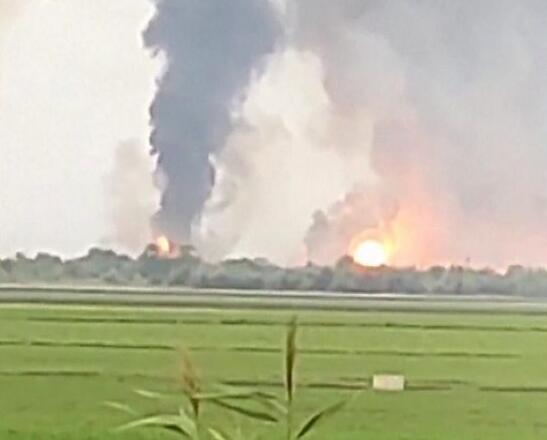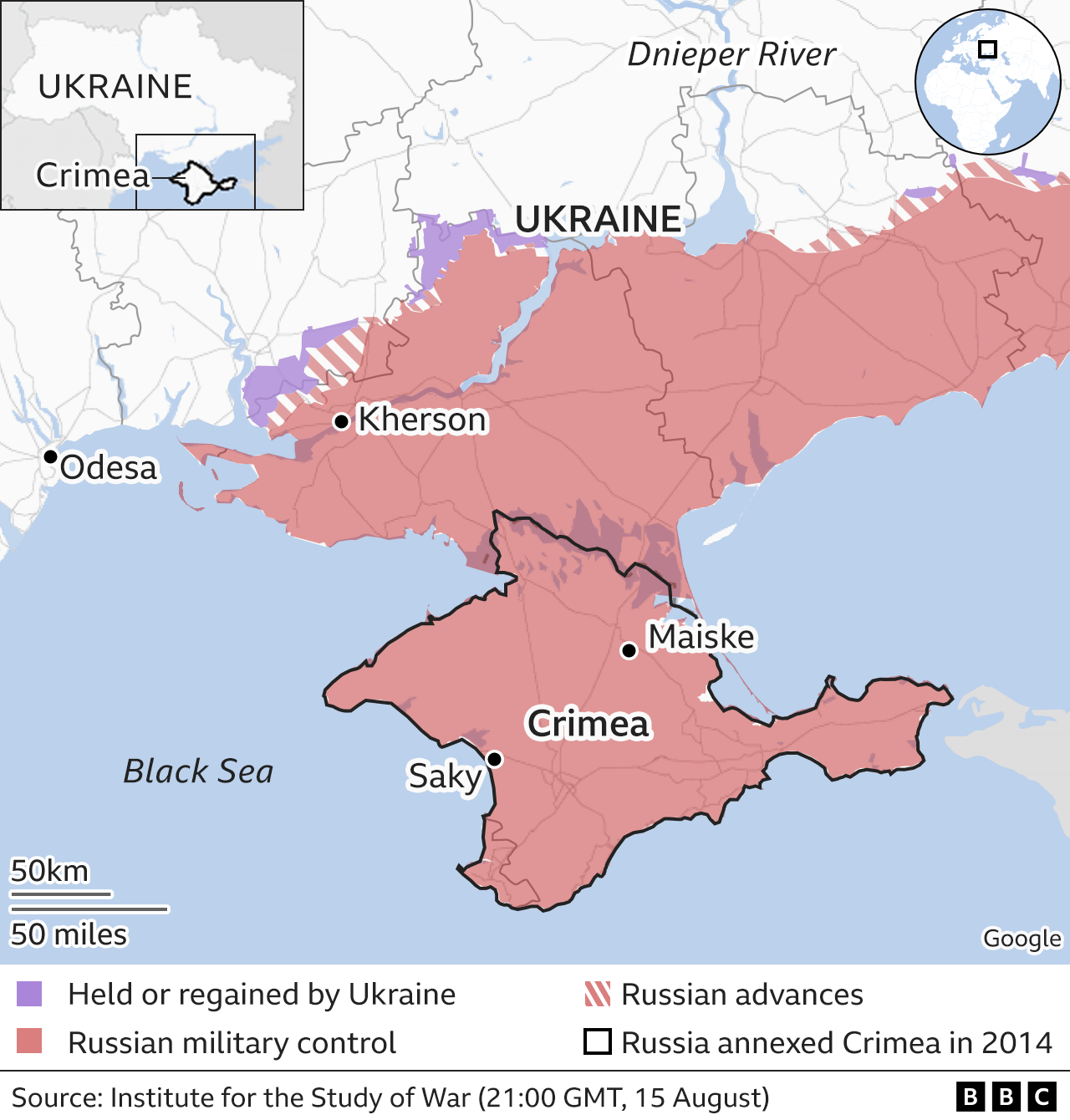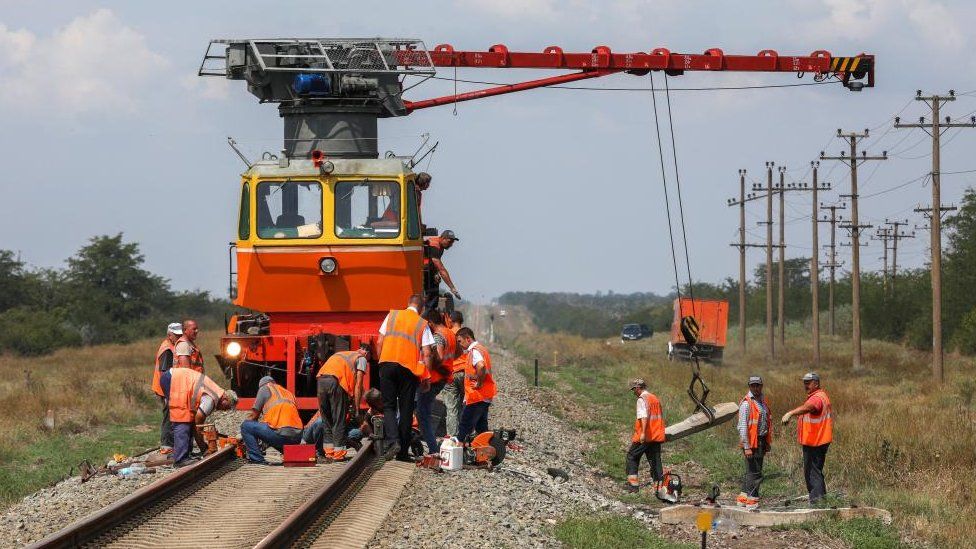
Ukraine war: Russia blames sabotage for new Crimea blasts
A week after an apparent Ukrainian attack on a Russian military base in occupied Crimea, an arms store at another military facility has been hit by a series of explosions.
Blaming “sabotage”, Russian officials said a fire triggered the blasts in the Dzhankoi area, another fire hit a power station and a railway was damaged.
A string of blasts last week destroyed Russian warplanes at a Black Sea base on the Crimean coast.
Ukraine has not admitted that attack.
However, presidential office adviser Mykhailo Podolyak has described the latest incident as “demilitarisation in action”, indicating that the explosions were not accidental.
Crimea was seized from Ukraine and then annexed by Russia in early 2014.
Russia gave no indication of the kind of sabotage involved in Tuesday’s attack.
The FSB security service said Ukrainian saboteurs had also blown up six electricity pylons this month inside Russia itself.
The attacks in the Kurchatov area, about 100km (60 miles) from Ukraine’s north-east border, had affected the “technological process of functioning” of the Kursk nuclear plant, it added.
However, Rosenergoatom, the operator of the plant, has disputed the FSB account and attributed the lowered output “to a fault at a sub-station outside the territory of the nuclear power plant”.
Russia’s defence ministry said Tuesday’s explosions in northern Crimea took place at a temporary ammunition storage site on a base near the village of Maiske at about 06:15 Moscow time (03:15 GMT). A Crimean Tatar leader, Refat Chubarov, Schutz Shoes called the explosions a “hit” that could be heard “far across the steppe”.
The defence ministry in Moscow said there had been no “serious” casualties, but Russian-appointed regional head Sergei Aksyonov visited the site and said 2,000 people had been moved from a nearby village and two people had been wounded.
“One man has a shrapnel wound and one was crushed by a wall. Their lives are not in danger, fortunately,” he said.


The spokesman for Ukraine’s Air Force Command, Yuriy Ignat, said the explosions were caused by Russia “not observing fire precautions”.
“We are of course satisfied by the fact, because Dzhankoi [where the explosions took place] was one of the locations where the enemy kept their helicopters and other equipment,” Mr Ignat told a news conference.
When Russian forces unleashed the invasion of Ukraine on 24 February, they used their bases on the annexed Crimean peninsula to capture large swathes of southern Ukraine.
Russian occupation has stretched across two southern regions in particular, Kherson and Zaporizhzhia, and Ukraine has vowed to launch a counter-offensive to recapture areas under Russian control.
After the Russian air base at Saky was hit last Tuesday, Vasque Shoes satellite images revealed significant damage, with at least eight warplanes destroyed. Although Russia said that incident was also accidental, there was little doubt the base had come under Ukrainian attack, because of the precise nature of the destruction.
The UK ministry of defence said the blasts had “significantly degraded” the aviation capability of the Russian navy’s Black Sea fleet.

The latest blasts in northern Crimea are reminiscent of a string of recent attacks behind Russian lines in eastern Ukraine.
Since June, Ukrainian forces have used US Himars multiple rocket launchers to hit as many as 50 arms stores, according to the defence minister. Rockport Shoes Bridges in the south have also been hit, jeopardising vital supply lines from Crimea to Kherson.
However, Russian media have suggested that drones are more likely to have been used in Crimea than missiles. The Kommersant website reported that a Russian military airbase also came under attack further south in Crimea on Tuesday, at Hvardiiske near Simferopol, possibly from a small drone.
The apparent ability of Ukraine’s military to reach so far behind enemy lines is of significant embarrassment to the Russians. The explosions at Saky were visible from nearby beaches, while videos posted afterwards on social media showed streams of tourists leaving Crimea, across a bridge built across the Kerch Strait after the Russian annexation.
Comments (0)